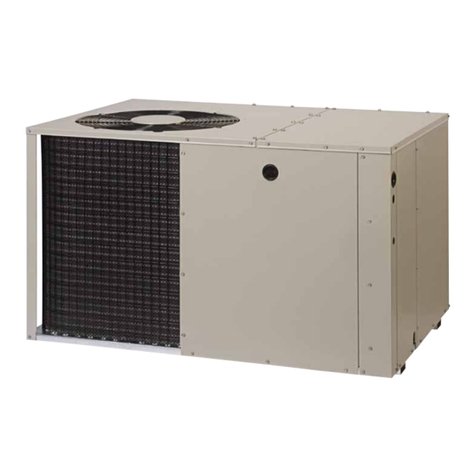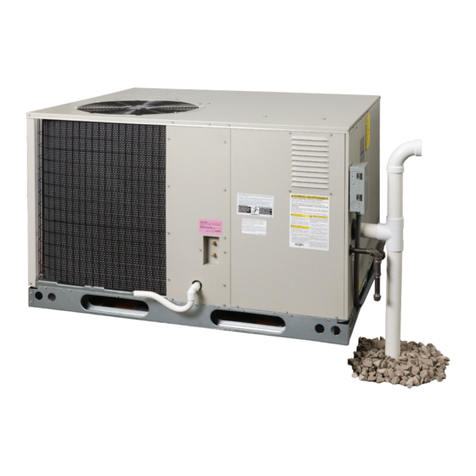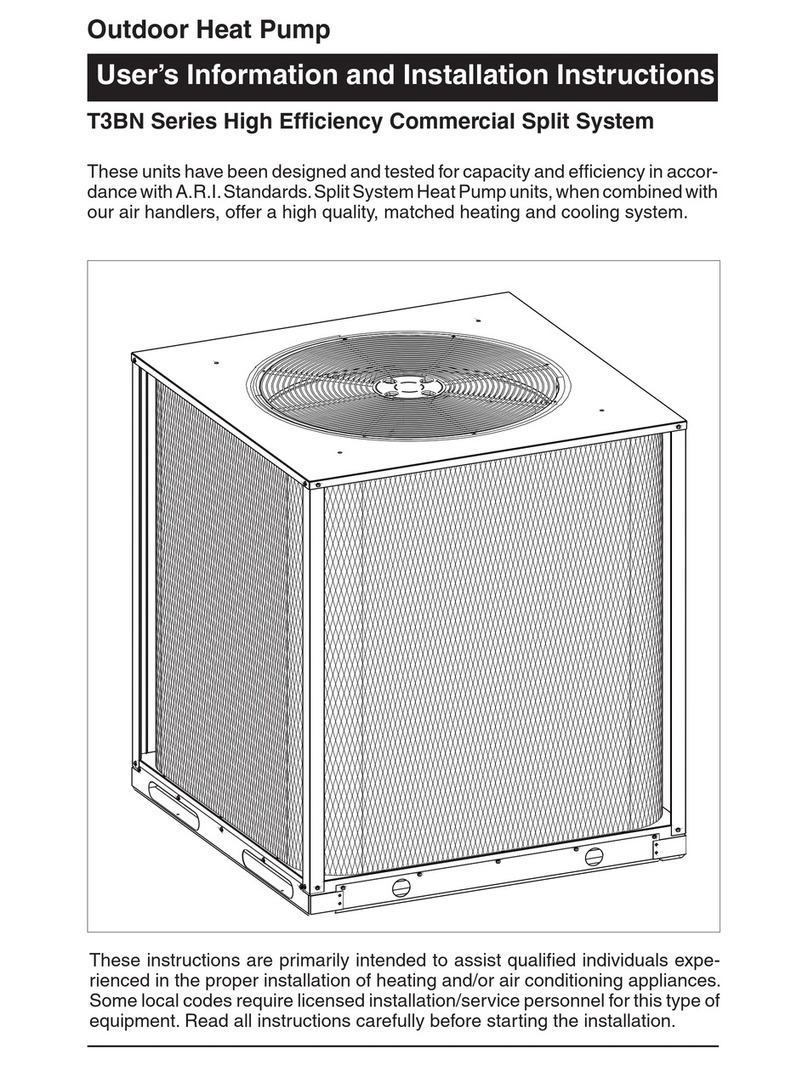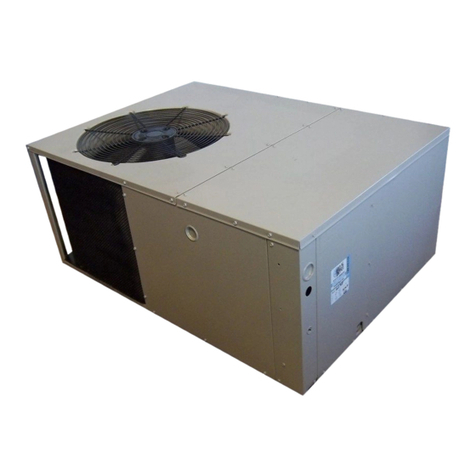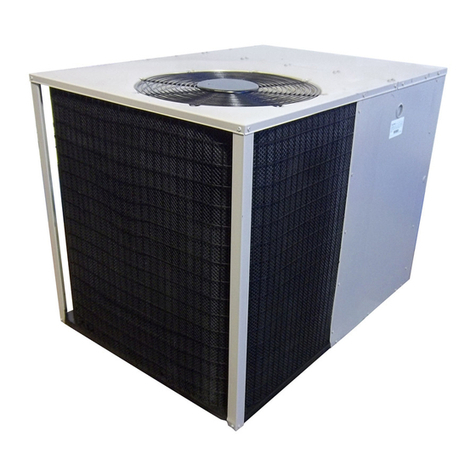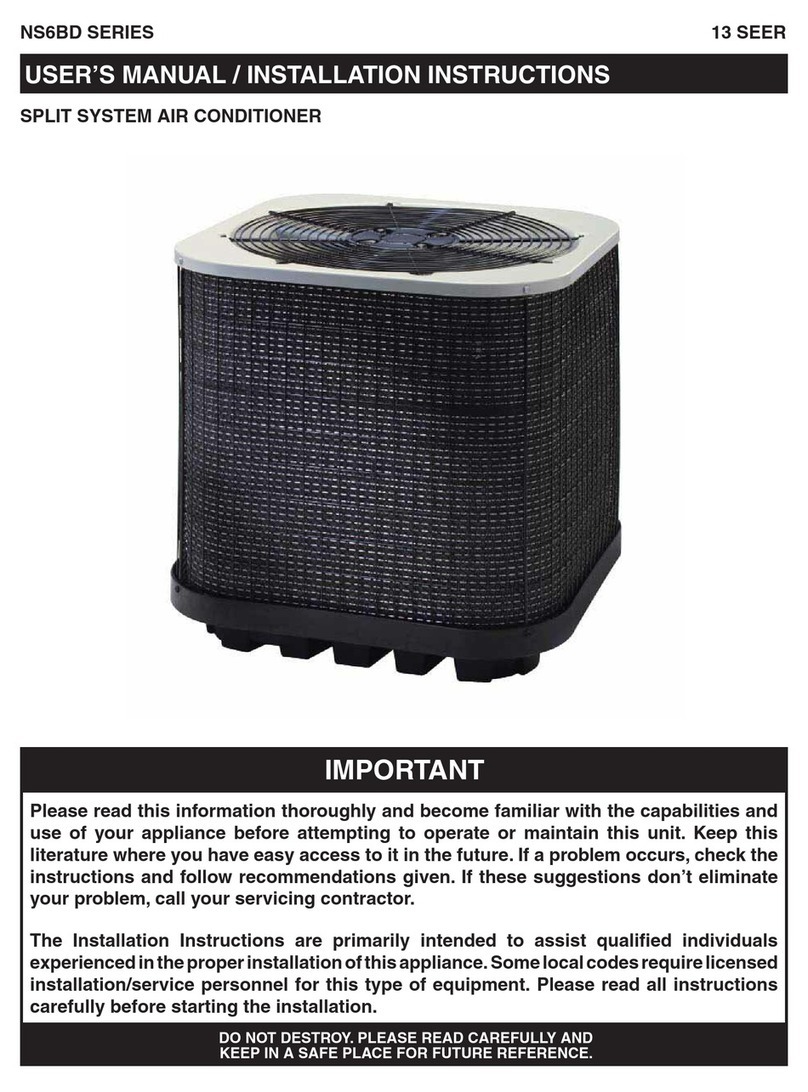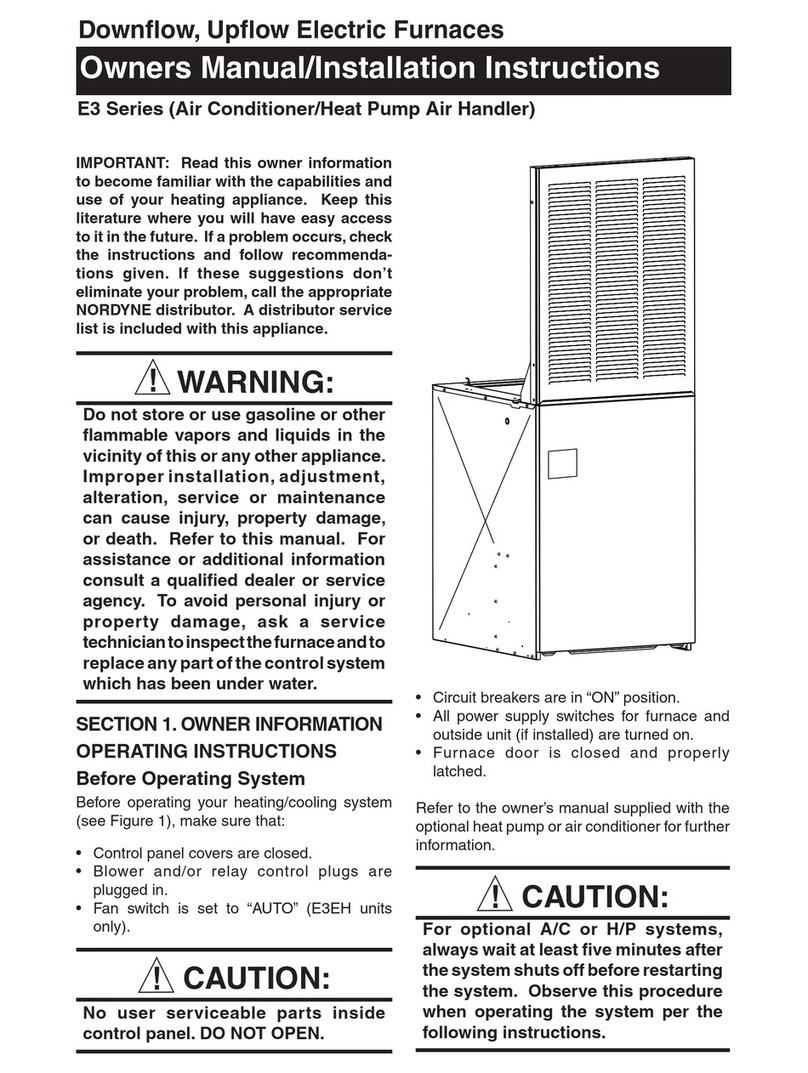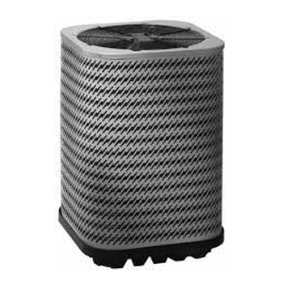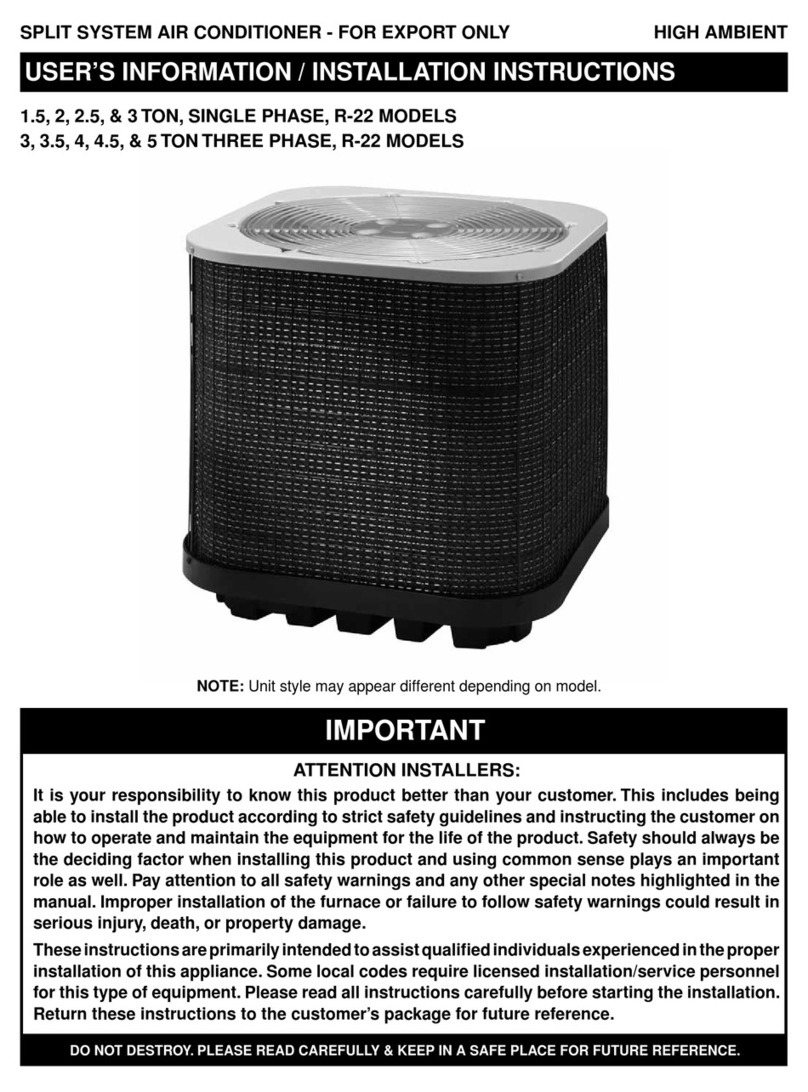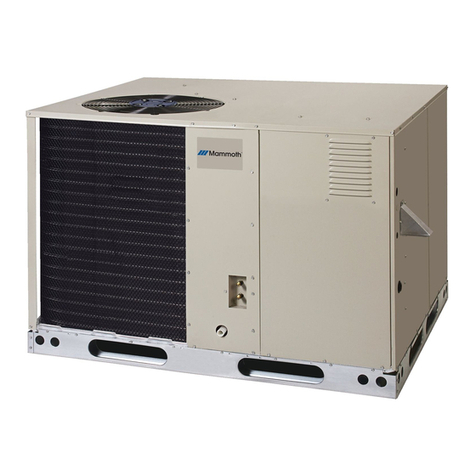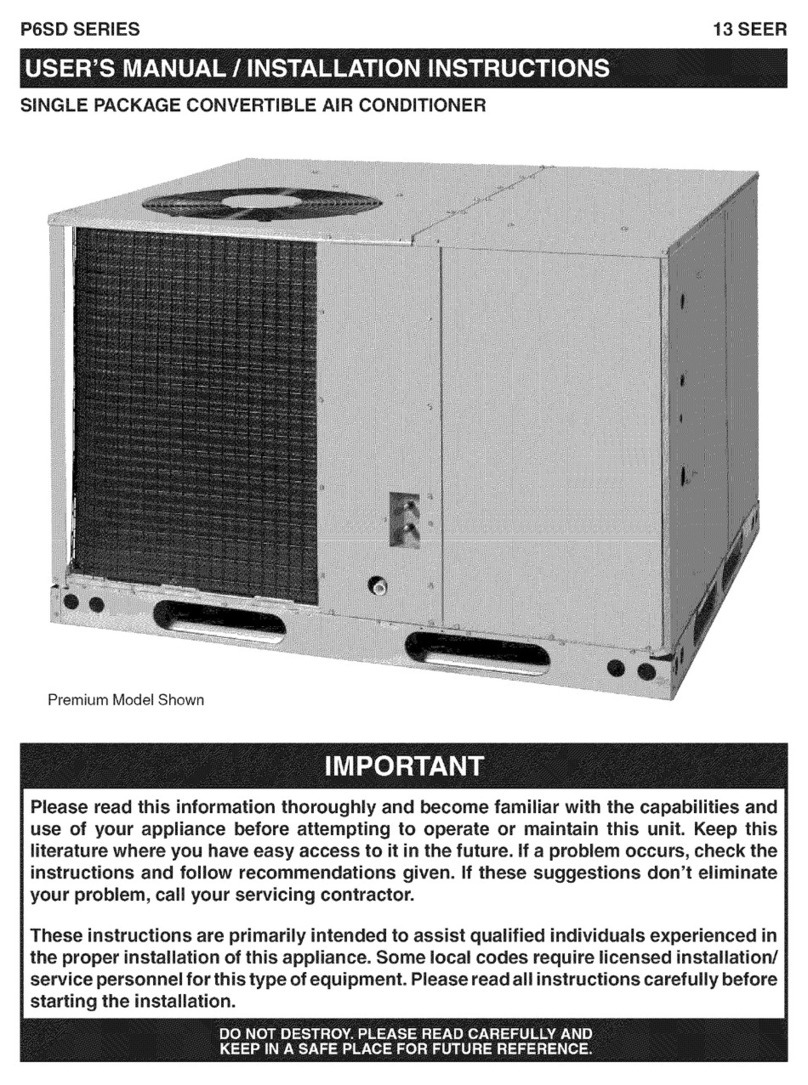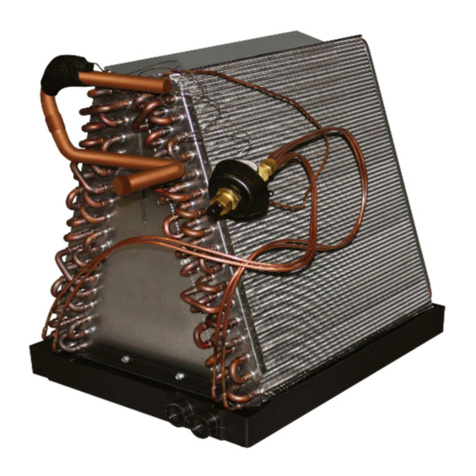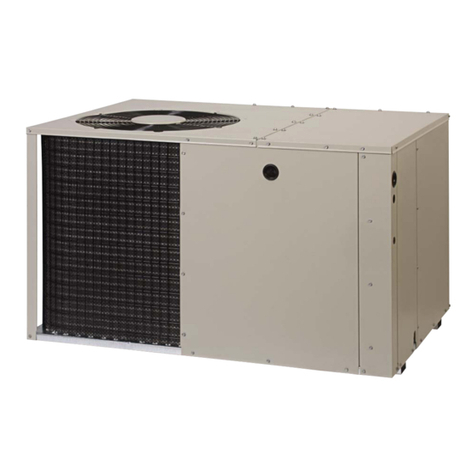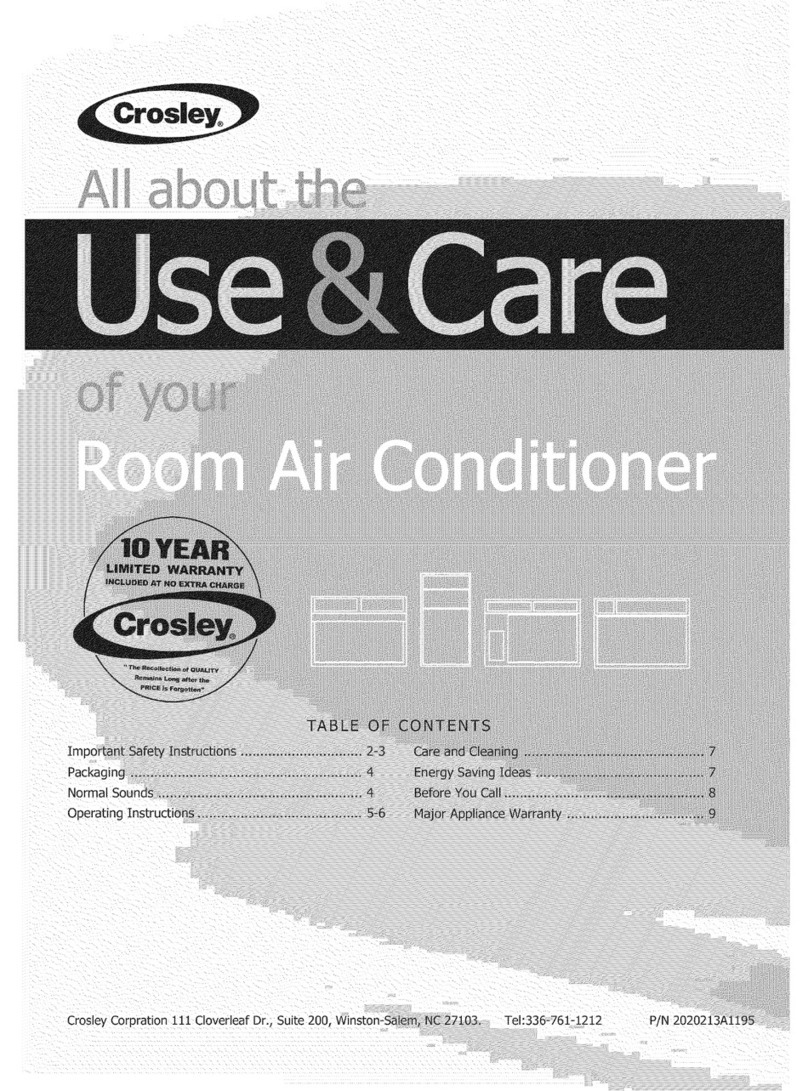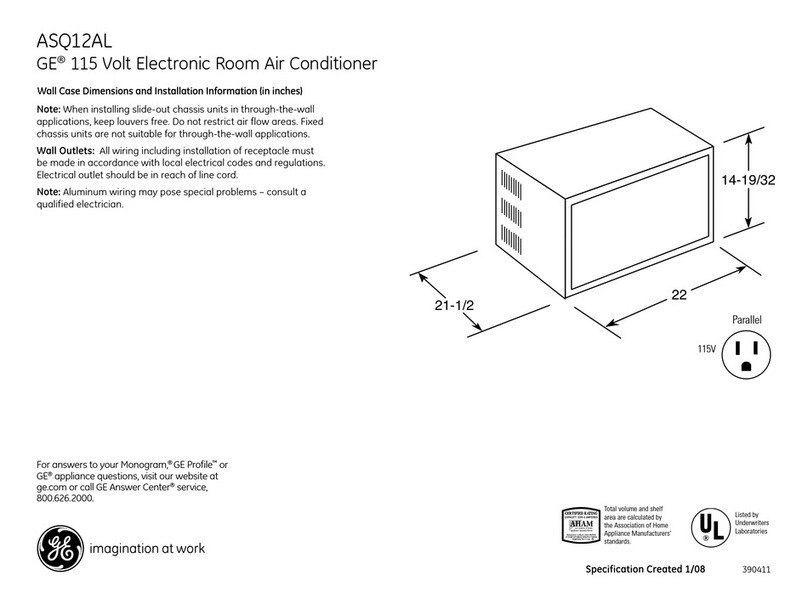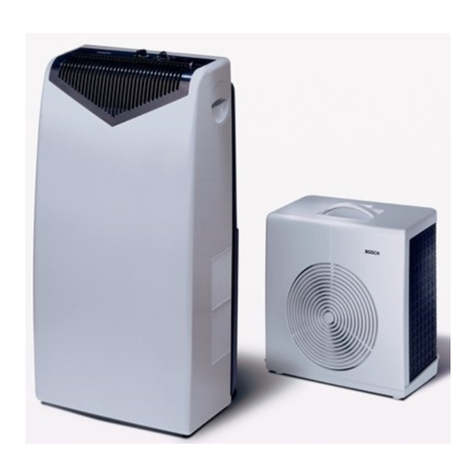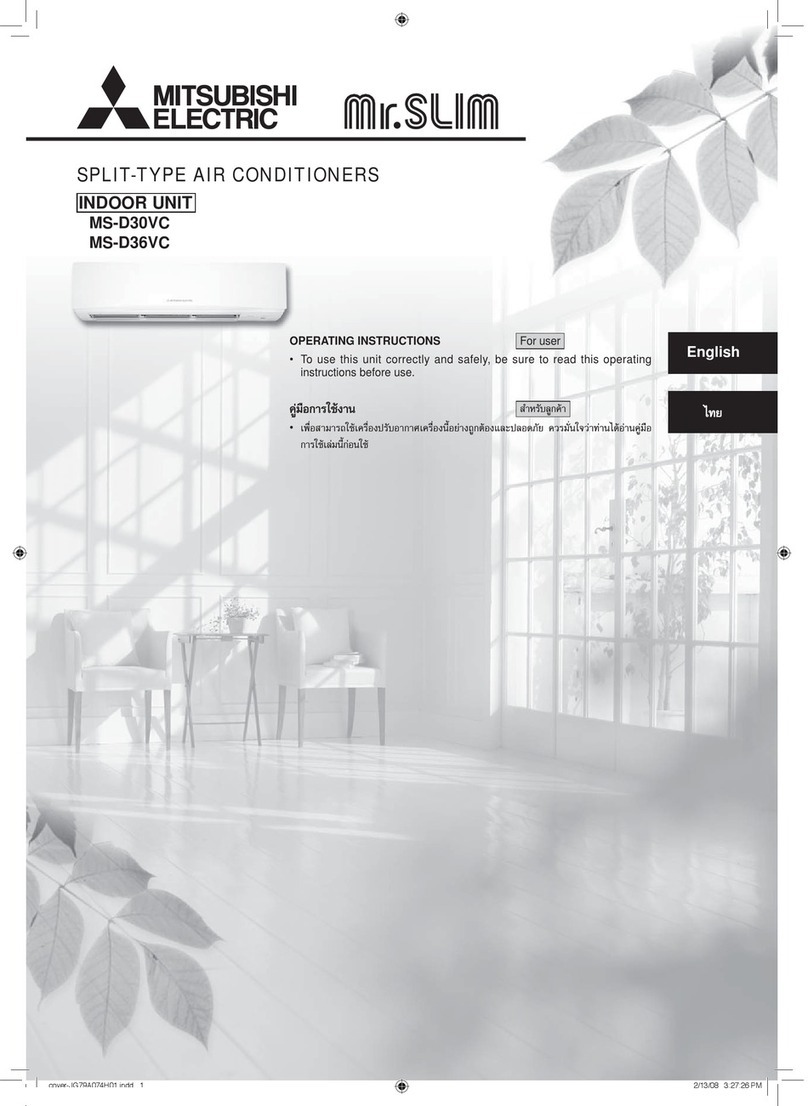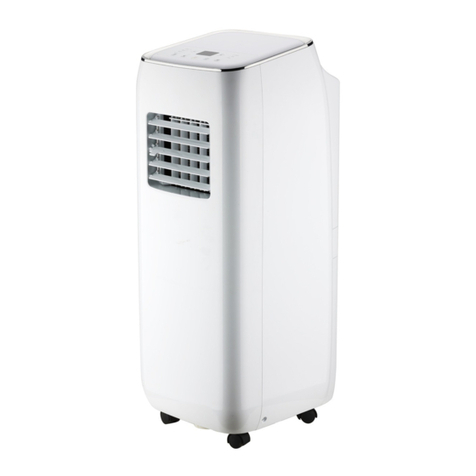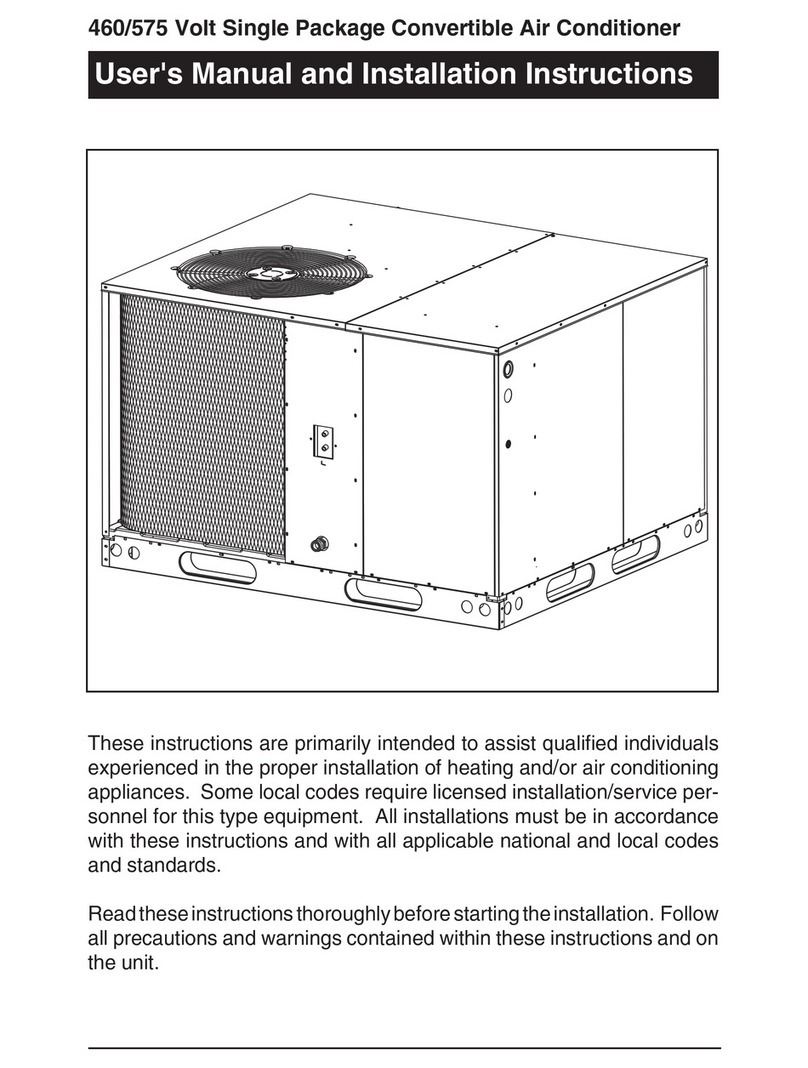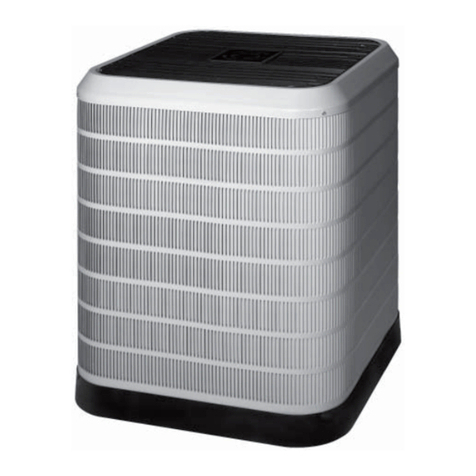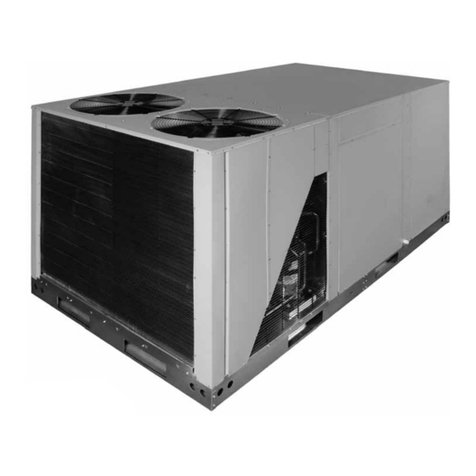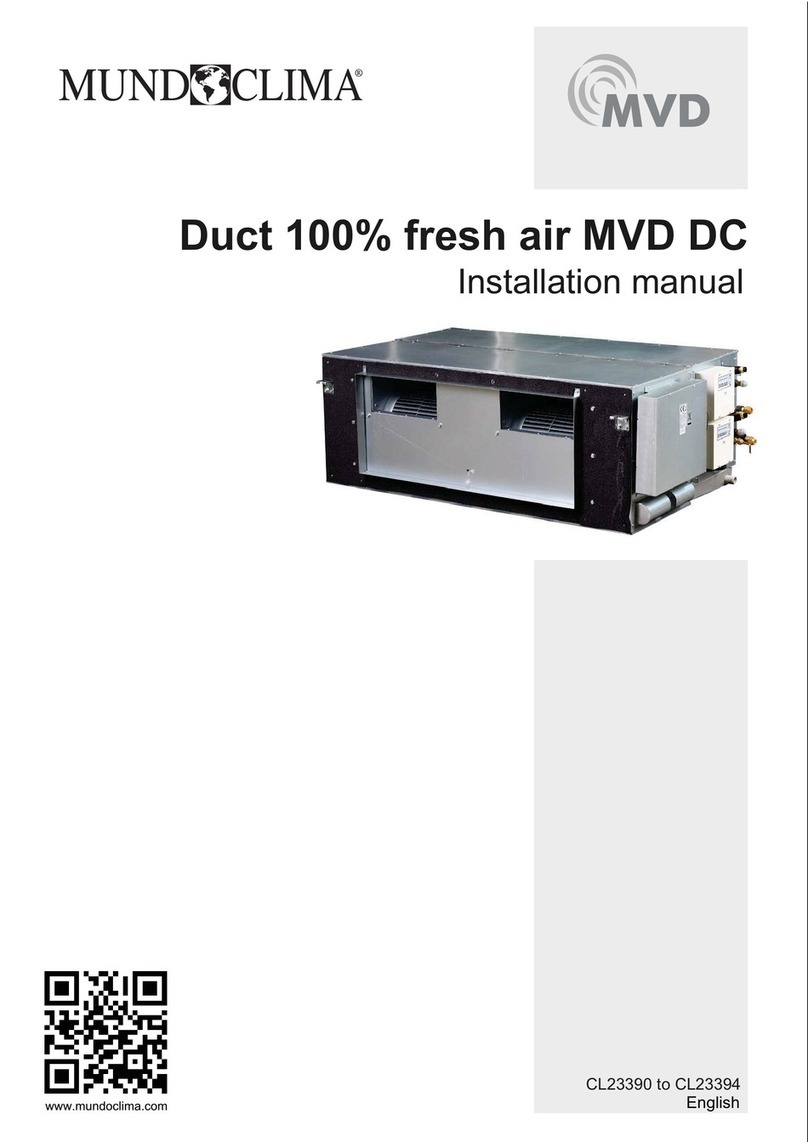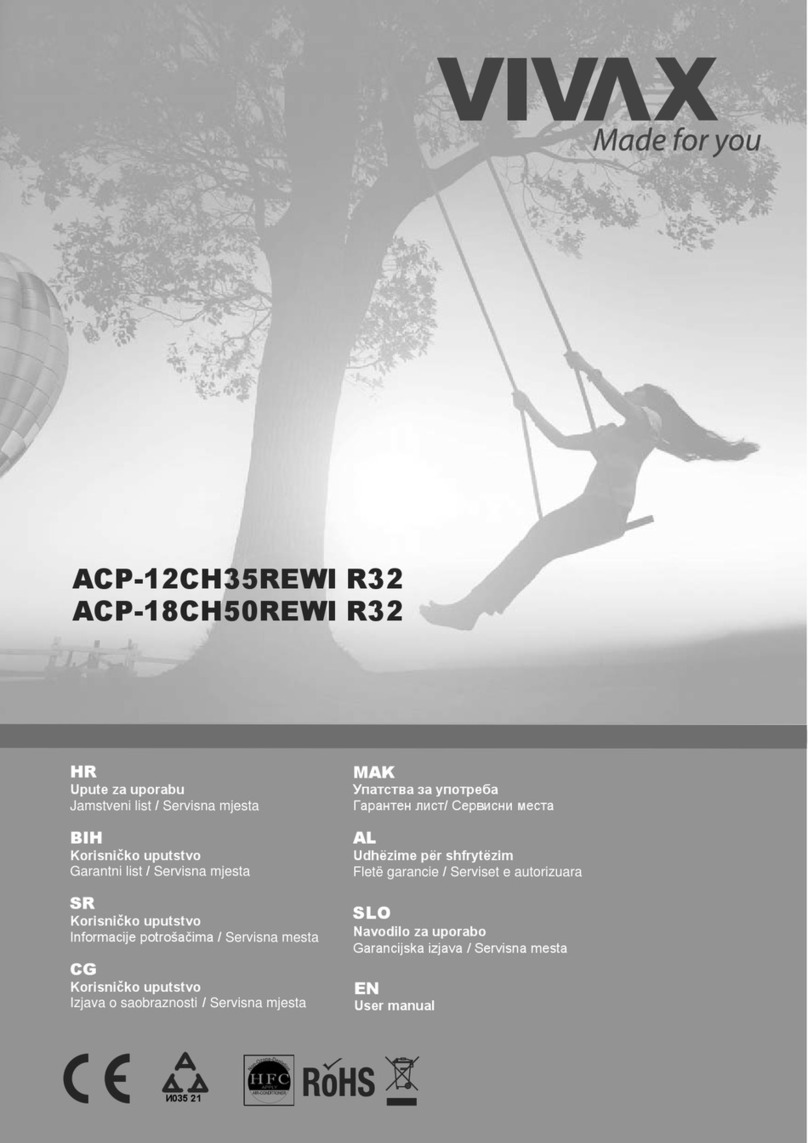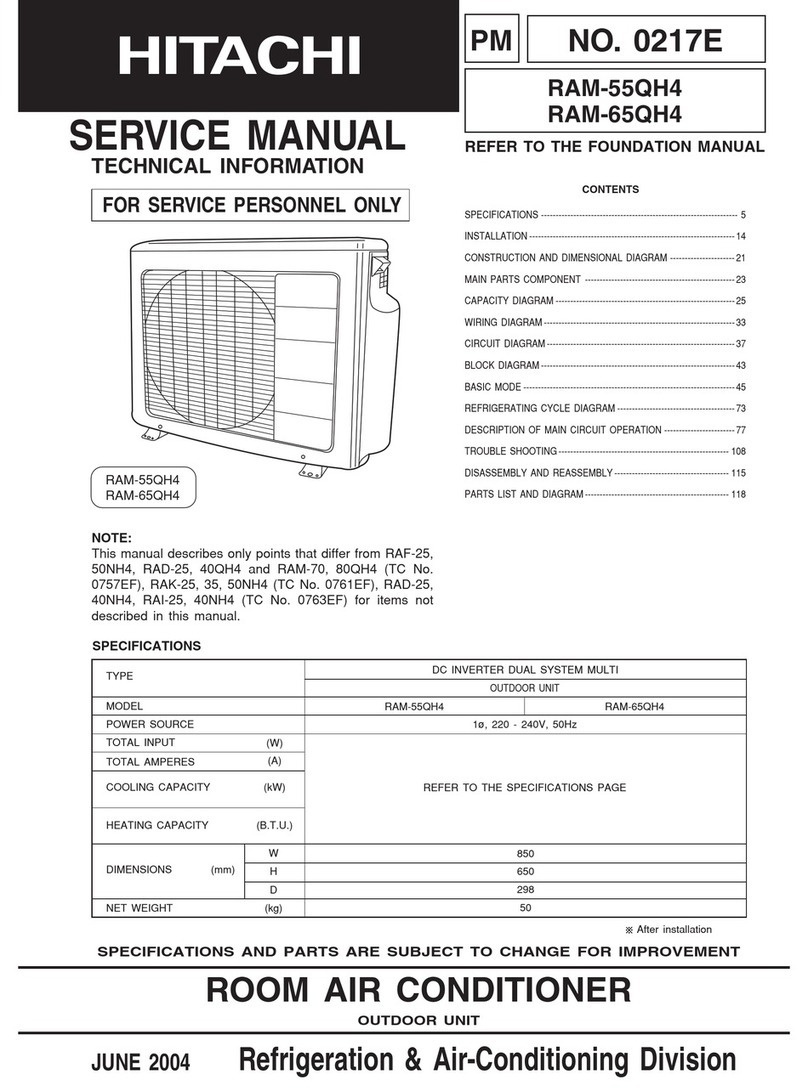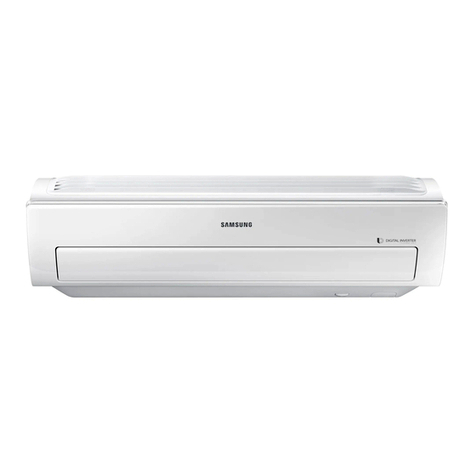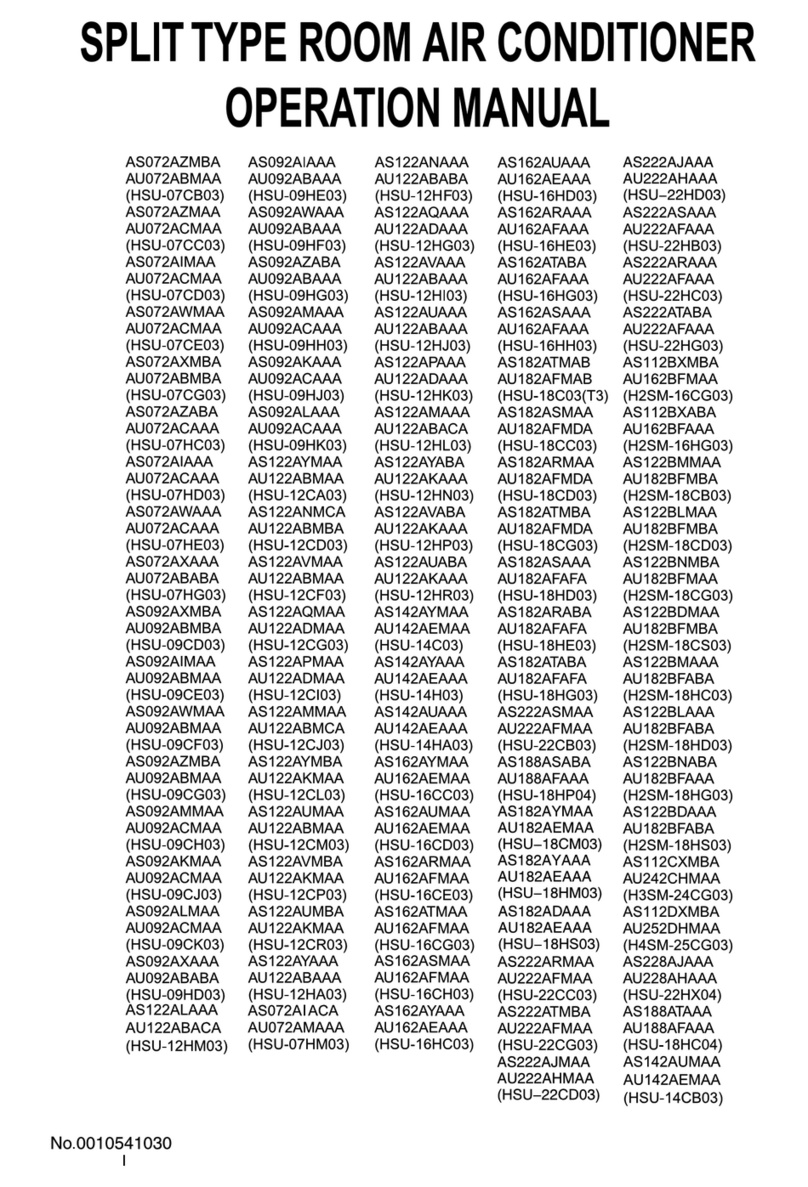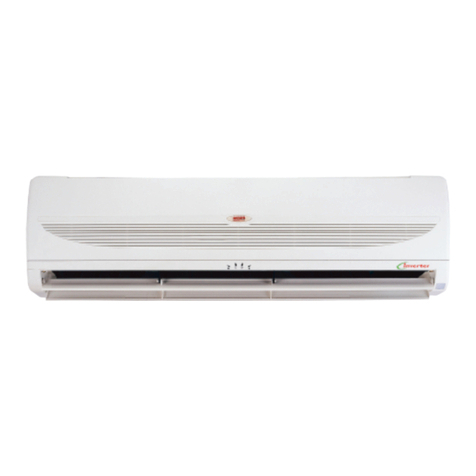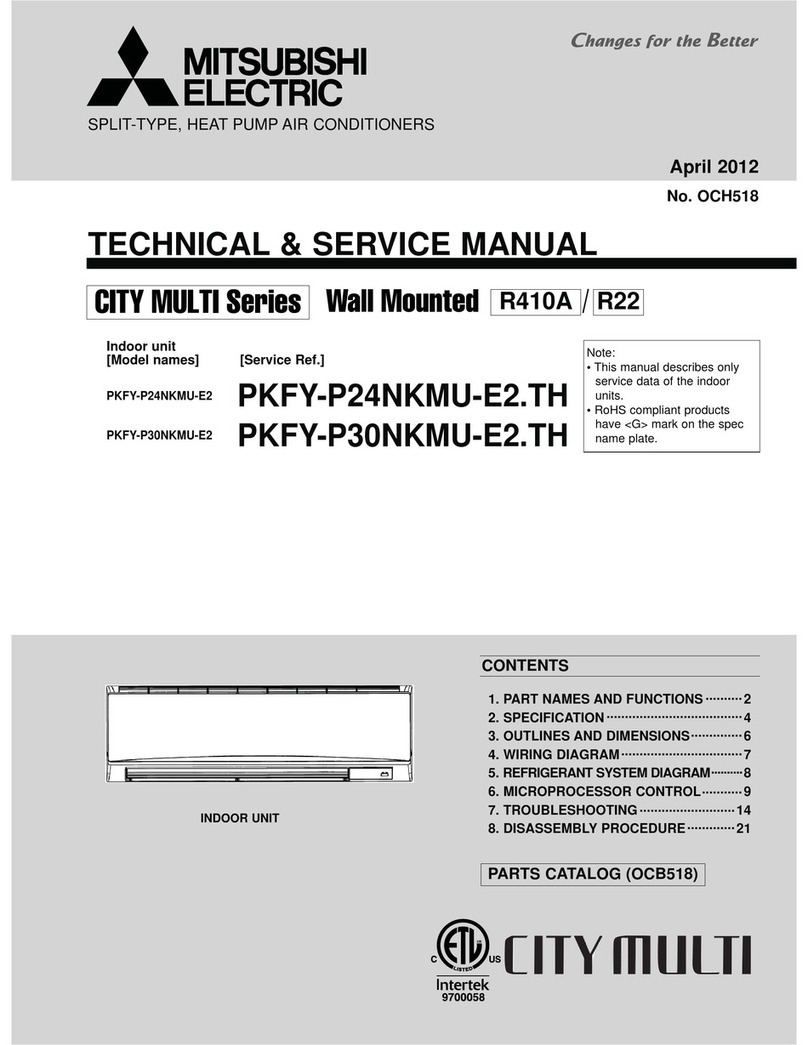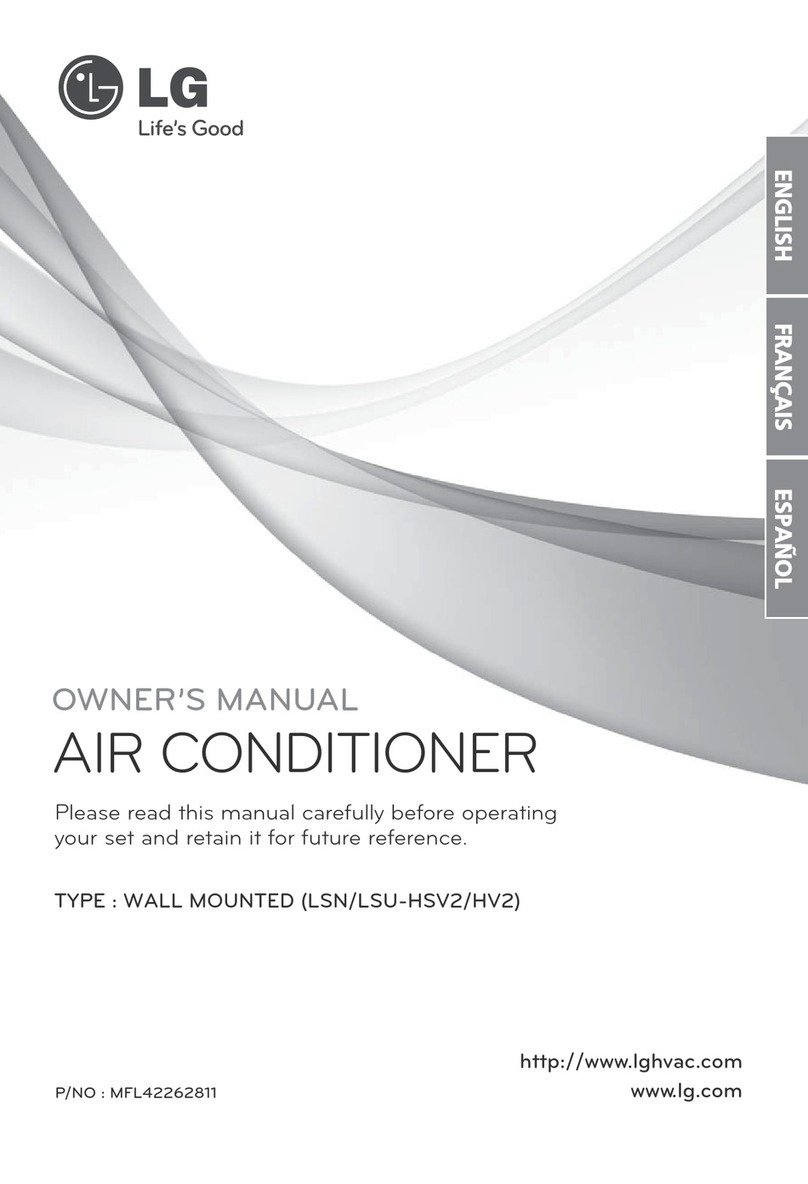
9
System Heating (optional)
1.Set the thermostat's system mode to HEAT and the
temperature mode above room temperature.
2.Verify the optional heating equipment (furnace or
electric heat) and indoor blower energize. Feel the air
being circulated by the indoor blower and verify that
it is warmer than ambient temperature. Listen for any
unusualnoises.Ifunusualsoundsoccur,determinethe
source of the noise and correct as necessary.
Charging Units in AC mode when Outdoor Temperature
is above 55° F (optimized sub-cooling of 10° F - 12° F)
1.With the system operating at steady-state, measure
the liquid refrigerant pressure (in PSIG) at the outdoor
unit service valve.
2.Measure the liquid refrigerant temperature (in
Fahrenheit) at the service valve.
3.Determinetherequiredliquidrefrigerantpressurefrom
Table 3 &Table 4 (page 15).
• IfthepressuremeasuredinStep1isgreaterthan
therequiredliquidrefrigerantpressuredeterminedin
Step3,thenthereistoo muchchargeinthesystem.
Remove refrigerant and repeat Steps 1 through 3
until the system is correctly charged.
• IfthepressuremeasuredinStep1islessthanthe
required liquid refrigerant pressure determined in
Step 3, there is too little charge in the system. Add
refrigerant and repeat Steps 1 through 3 until the
system is correctly charged.
Refrigerant Charging
WARNING:
4-5Ton Split System Air Conditioners leave
the factory with a nitrogen holding charge.
Follow these charging instructions for
maximum unit performance and efficiency.
Somelocalcodesrequirelicensedinstallation/
service personnel to service this type of
equipment. Refrigerant charging must be
done by qualified personnel familiar with
safe and environmentally responsible
refrigerant handling procedures.Under no
circumstances should the owner attempt
to install and/or service this equipment.
Failure to comply with this warning could
result in property damage,personal injury,
or death.
After refrigerant line connections are completed, it is
required that you leak check and evacuate the indoor
section and all line connections (using proper methods)
before finalizing the full system refrigerant charge.
• Toachieveratedcapacityandefciencythecompressor
must be exposed to refrigerant for at least 24 hours
prior to running and then the compressor must be run
for a minimum of 12 hours.
• Tables3&4(page15)areapplicableonlytomatched
assembliesofNORDYNEequipmentandlistedairows
for the indoor coil. Outdoor units with indoor coils
not listed are not recommended and deviations from
rated airflows or non-listed combinations may require
modification to the expansion device and refrigerant
charging procedures for proper and efficient system
operation.
• Therefrigerantchargecanbecheckedandadjusted
through the service ports provided external to the
outdoor unit. Use only gage linesets which have a
“Schrader” depression device present to actuate the
valve.
• 4Tonunitsshoulduse0.079oriceintheliquidline
and should be charged with 67 oz.of R-22 refrigerant
as specified in the supplied addendum (7091540).
5 Ton units should use 0.093 orifice in the liquid line
and should be charged with 82 oz.of R-22 refrigerant
as specified in the supplied addendum (7091540).
AIR CONDITIONER MAINTENANCE
WARNING:
Topreventelectrical shock,personal injury,
or death,disconnect all electrical power to
theunit beforeperforming anymaintenance
or service. The unit may have more than
one electrical supply.
Proper maintenance is important to achieve optimum
performancefromtheairconditioner.Theabilitytoproperly
perform maintenance on this equipment requires certain
mechanical skills and tools. If you do not possess these
skills, contact your dealer for maintenance. Consult your
localdealerabouttheavailabilityofmaintenancecontracts.
Routine maintenance should include the following:
• Inspectandcleanorreplaceairltersatthebeginning
ofeachheatingandcoolingseason,ormorefrequently
if required.
• Inspectthecondensatedrainandoutdoorcoilatthe
beginningofeachcoolingseason.Removeanydebris.
Cleantheoutdoorcoilandlouversasnecessaryusing
amilddetergentandwater.Rinsethoroughlywithwater.
• Inspecttheelectricalconnectionsfortightnessatthe
beginningofeachheatingandcoolingseason.Service
as necessary.
CAUTION:
The unit should never be operated without
a filter in the return air system. Replace
disposable filters with the same type and
size.
• Do not attempt to add additional oil to motors un-
equippedwithoiltubes.Thecompressorishermetically
sealed at the factory and does not require lubrication.
















